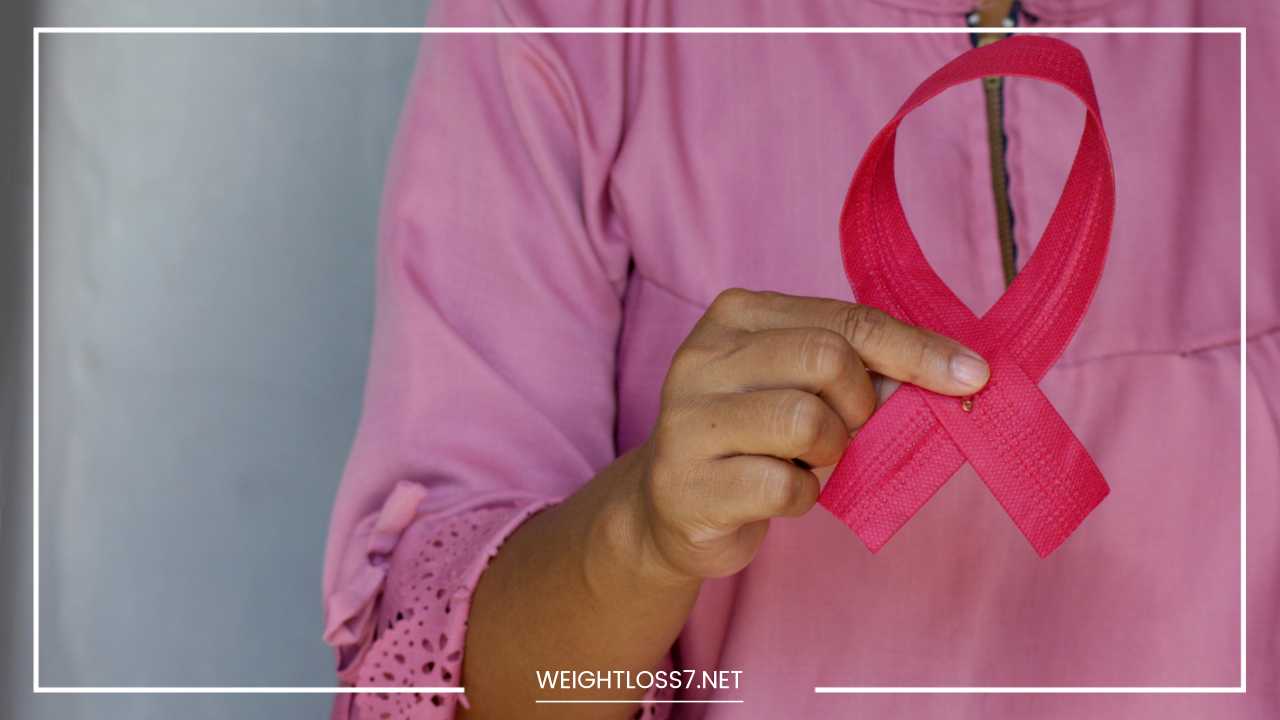Cancer Explained: Fight It with Knowledge

Cancer
Delving Deeper: A Comprehensive Guide to Understanding Cancer
Cancer. A single word that carries immense weight, sparking fear and uncertainty. It’s a complex disease with a multitude of faces, affecting individuals of all ages, backgrounds, and ethnicities.
Yet, amidst the fear lies a wellspring of knowledge and resources. This blog post delves deeper into the world of cancer, aiming to equip you with a comprehensive understanding of the disease, its diverse forms, potential causes, available treatments, and the path forward.
The Cellular Rebellion: Unveiling the Root of Cancer
At its core, cancer is a cellular rebellion. Our bodies are intricate ecosystems, governed by trillions of cells constantly dividing and replicating in a finely tuned dance.
This orderly process ensures our bodies grow, repair themselves, and function optimally. However, in cancer, this harmony disintegrates. Mutations creep into our genes, disrupting the control mechanisms that dictate cell growth.
These mutations cause some cells to become rogue, multiplying uncontrollably and forming abnormal masses called tumors.
Tumor Trouble: Benign vs. Malignant
Not all tumors are created equal. We can categorize them based on their growth patterns and potential for harm:
- Benign tumors: These are the good guys (sort of). They grow slowly, remain confined to their origin, and don’t invade nearby tissues. While they can cause discomfort due to their size or location, they aren’t life-threatening on their own. Examples include lipomas (fatty tumors) and uterine fibroids.
- Malignant tumors: These are the true villains. They exhibit two particularly concerning characteristics:
- Invasiveness: Malignant tumors have a nasty habit of infiltrating surrounding healthy tissues, disrupting their function and causing damage.
- Metastasis: This is the hallmark of aggressive cancers. Cancerous cells can break free from the primary tumor, travel through the bloodstream or lymphatic system, and establish new tumors (secondary tumors) in distant organs. Metastasis is the leading cause of death from cancer.
The Rogues’ Gallery: A Look at Different Types of Cancer
With over 200 distinct types of cancer, each with its unique characteristics, understanding the specific villain you face is crucial. Here’s a breakdown of some common cancer types based on the tissue of origin:
- Carcinomas: These are the most prevalent type, arising from epithelial cells lining our organs and body surfaces. Common examples include breast cancer, lung cancer, colon cancer, and prostate cancer.
- Sarcomas: These originate in connective tissues like bones, muscles, cartilage, and fat. Bone cancer, liposarcoma (cancer of fat cells), and leiomyosarcoma (cancer of smooth muscle) are some examples.
- Leukemias: These cancers affect the blood and bone marrow, the body’s blood cell production factories. Leukemia cells crowd out healthy blood cells, leading to deficiencies in immune function and blood production. Common types include acute lymphocytic leukemia (ALL) and chronic myeloid leukemia (CML).
- Lymphomas: These cancers develop in the lymphatic system, a network of vessels and organs crucial for immunity. Lymphoma can affect lymph nodes, the spleen, and other lymphoid organs. Hodgkin lymphoma and non-Hodgkin lymphoma are the two main categories.
The Culprits Behind the Curtain: Unveiling the Causes of Cancer
While the exact cause of any specific cancer case can be complex, several factors can contribute to its development:
- Genetic Predisposition: Inherited mutations in certain genes, like BRCA1 and BRCA2 in breast and ovarian cancer, can significantly increase cancer risk.
- Carcinogens: These are environmental agents that damage DNA and promote uncontrolled cell growth. Common carcinogens include tobacco smoke, ultraviolet radiation from the sun, and exposure to certain chemicals.
- Lifestyle Choices: Diet, physical activity level, and weight management play a significant role. Obesity increases the risk of various cancers, while a diet rich in fruits, vegetables, and whole grains can offer some protection.
- Chronic Infections: Certain viruses like HPV (human papillomavirus) and Hepatitis B can trigger mutations that lead to cancer development.
Listen to Your Body: Recognizing the Signs and Symptoms of Cancer
Cancer symptoms can vary greatly depending on the type and location of the tumor. However, some general warning signs can’t be ignored:
- Unexplained weight loss or gain: This can be a sign of the body’s struggle to maintain itself or the tumor itself consuming resources.
- Persistent fatigue: Feeling constantly tired or drained for no apparent reason could indicate cancer’s impact on the body’s systems.
- Fever or night sweats: These can be signs of the body’s inflammatory response to the presence of cancer.
- Pain or tenderness: Localized pain in a specific area, especially if it worsens over time, could be a sign of an underlying issue and should be evaluated by a doctor.
- Changes in bowel or bladder habits: This could include constipation, diarrhea, blood in stool, or difficulty urinating.
- Unusual bleeding or discharge: Unexpected vaginal bleeding outside of menstruation, persistent bloody coughs, or bloody nipple discharge can be warning signs.
- Lumps or bumps: While not all lumps are cancerous, any new or rapidly growing lump, especially in the breast, testicle, or lymph nodes, warrants a doctor’s evaluation.
- Skin changes: New moles, existing moles that change in size, shape, or color, persistent sores that don’t heal, or unexplained yellowing or darkening of the skin can be signs of underlying cancer.
- Difficulty swallowing or persistent indigestion: These symptoms can indicate tumors obstructing the digestive tract.
- Hoarseness or persistent cough: Changes in voice or a cough that doesn’t resolve with treatment could be signs of lung cancer or other cancers affecting the respiratory system.
Early Detection is Key: The Power of Screening and Self-Awareness
Early detection is the cornerstone of successful cancer treatment. Regular screenings recommended by your doctor, based on your age, family history, and risk factors, can help identify abnormalities before they progress.
Common screening tests include mammograms for breast cancer, colonoscopies for colorectal cancer, Pap smears for cervical cancer, and low-dose CT scans for lung cancer.
In addition to screenings, self-awareness is critical. Perform regular self-examinations for breast cancer and testicular cancer, and be mindful of any changes in your body. Don’t hesitate to discuss any concerns with your doctor, no matter how minor they may seem.
The Arsenal Against the Enemy: Treatment Options for Cancer
A cancer diagnosis can feel overwhelming, but there is hope. With advancements in medical science, there’s an array of treatment options available, and the best course of action depends on several factors, including the type, stage, and location of the cancer, as well as your overall health. Here’s an overview of some common treatment modalities:
- Surgery: This remains a cornerstone of cancer treatment, aiming to remove the tumor with clear margins (surrounding healthy tissue) to minimize the risk of recurrence.
- Chemotherapy: Powerful drugs are used to kill cancer cells throughout the body. Chemotherapy can be administered intravenously, orally, or topically, depending on the specific medication. While effective, chemo can come with a range of side effects.
- Radiation Therapy: High-energy beams of radiation are precisely targeted to destroy cancer cells or shrink tumors. Radiation therapy can be delivered externally from a machine or internally through implants placed near the tumor site.
- Targeted Therapy: These are newer drugs designed to target specific vulnerabilities within cancer cells, often with fewer side effects than traditional chemotherapy.
- Immunotherapy: This approach harnesses the body’s own immune system to recognize and attack cancer cells. Immunotherapy can involve stimulating the immune system, blocking its suppression by cancer, or introducing engineered immune cells to target the tumor.
Living Beyond the Diagnosis: Support and Resources for Cancer Patients
A cancer diagnosis doesn’t define you. There’s a vast support system available to help you navigate this challenging journey. Here are some resources:
- Support groups: Connecting with others who understand what you’re going through can provide invaluable emotional support and a sense of community.
- Counseling services: Talking to a therapist can help you cope with the emotional impact of cancer and develop strategies for managing stress and anxiety.
- Patient advocacy organizations: These organizations provide information, resources, and support to cancer patients and their families.
The Road Ahead: The Future of Cancer Research and Treatment
Researchers are constantly striving to develop new and more effective cancer treatments. Promising areas include:
- Personalized medicine: Tailoring treatments to the specific genetic makeup of a patient’s cancer for better efficacy and fewer side effects.
- Gene therapy: Correcting or replacing faulty genes that contribute to cancer development.
- Immunotherapy advancements: Developing new ways to harness the body’s immune system to fight cancer more effectively.
Empowering Yourself: Taking Charge of Your Health
While we can’t control everything, adopting a healthy lifestyle can significantly reduce cancer risk. Here are some key steps:
- Maintain a healthy weight: Aim for a balanced diet rich in fruits, vegetables, and whole grains, and engage in regular physical activity.
- Limit alcohol consumption: Excessive alcohol intake increases cancer risk.
- Quit smoking and avoid secondhand smoke: Smoking is a major risk factor for various cancers.
- Protect your skin from the sun: Use sunscreen with SPF 30 or higher and limit exposure to midday sun.
- Get vaccinated: Vaccinations against HPV and Hepatitis B can help prevent cancers associated with these viruses.
- Regular checkups and screenings: Don’t put off your doctor’s appointments and screenings. Early detection is crucial for successful treatment.
The Emotional Impact of Cancer: Coping Strategies and Support Systems
Cancer doesn’t just affect the body; it takes a significant toll on the mind and spirit. A diagnosis can trigger a range of emotions, including fear, anger, sadness, isolation, and uncertainty. It’s important to acknowledge and address these emotions to maintain emotional well-being throughout your treatment journey.
Coping Mechanisms:
- Acknowledge your feelings: Don’t bottle up your emotions. Talk to a trusted friend, family member, therapist, or counselor. Expressing your feelings can be cathartic and help you process the situation.
- Join a support group: Connecting with others who understand what you’re going through can be incredibly helpful. Support groups provide a safe space to share experiences, concerns, and coping strategies.
- Practice relaxation techniques: Techniques like deep breathing exercises, meditation, and yoga can help manage stress and anxiety associated with cancer.
- Maintain a sense of normalcy: As much as possible, try to stick to your routines and activities you enjoy. This can provide a sense of stability and control during a chaotic time.
- Focus on self-care: Prioritize activities that nourish your mind, body, and spirit. This could include getting enough sleep, eating healthy foods, and engaging in physical activity as tolerated.
- Explore complementary therapies: Consider therapies like massage, acupuncture, or music therapy, which can help manage pain, anxiety, and fatigue.
The Power of Positivity:
While maintaining a positive outlook isn’t a guarantee of a cure, it can significantly improve your quality of life during treatment. Here are some tips to cultivate a positive mindset:
- Focus on what you can control: You may not be able to control the cancer itself, but you can control your attitude, your actions, and how you choose to face each day.
- Set realistic goals: Break down your treatment journey into smaller, achievable goals. Celebrating these milestones can boost your confidence and motivation.
- Practice gratitude: Focusing on the things you’re grateful for, even amidst challenges, can shift your perspective and promote a sense of well-being.
- Visualize success: Imagine yourself successfully completing treatment and getting back to your life. Visualization can be a powerful tool for fostering a sense of hope and resilience.
Remember: It’s okay to not be okay. Cancer is a difficult journey, and seeking professional help for managing your emotional well-being is a sign of strength, not weakness.
The Village Around You: Building a Strong Support System
No one should fight cancer alone. Surround yourself with a supportive network of loved ones who can offer emotional and practical assistance throughout your treatment. Here’s how to build a strong support system:
- Communicate openly and honestly with your loved ones: Let them know what kind of support you need, whether it’s emotional support, help with errands, or practical assistance with childcare or housework.
- Delegate tasks: Don’t be afraid to ask for help. Let others share the burden by delegating tasks that may be overwhelming for you during treatment.
- Educate your support system: The more your loved ones understand about cancer and your specific situation, the better equipped they will be to support you.
- Be patient with yourself and others: Cancer can take a toll on relationships. Communicate openly and practice patience with yourself and your loved ones as you navigate this challenging experience together.
Final Word:
Cancer is a life-altering experience, but it doesn’t have to define your future. By equipping yourself with knowledge, adopting healthy habits, building a strong support system, and prioritizing your emotional well-being, you can navigate the challenges of cancer and emerge stronger on the other side.
Remember, you are not alone. There is hope, there is support, and there is a future beyond cancer.
Remember: Knowledge is power. The more you understand about cancer, the better equipped you are to face it. This blog post provides a foundational understanding, but it’s vital to consult reliable sources like the American Cancer Society (http://www.cancer.org/) or the National Cancer Institute for in-depth information.
You are not alone. With the right support system, knowledge, and a proactive approach to your health, you can navigate the challenges of cancer and live a fulfilling life.

















